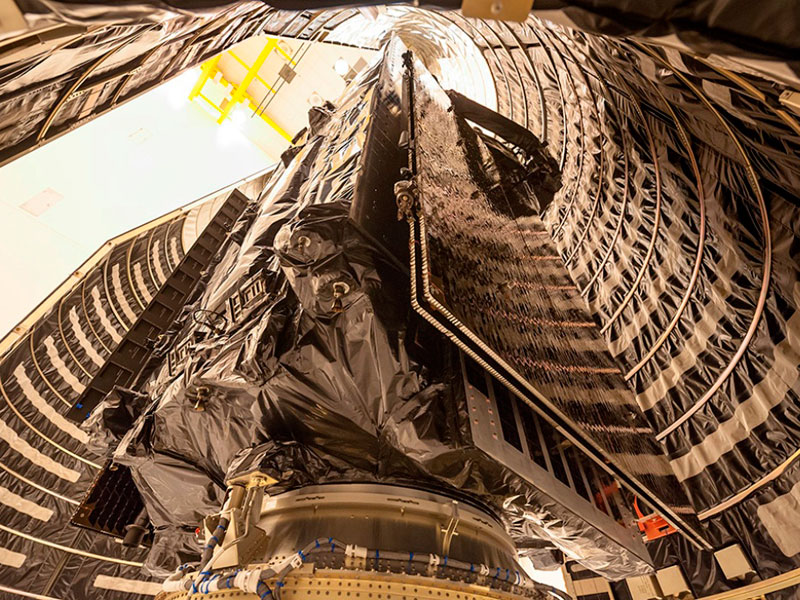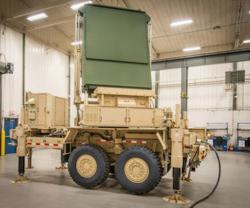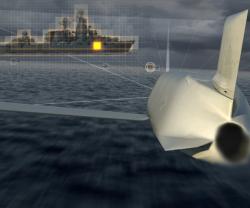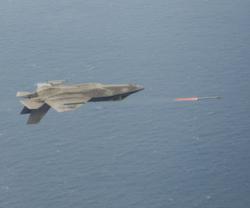USAF, LM Launch 2nd Infrared Surveillance Satellite
19.03.2013 North America
The U.S. Air Force and Lockheed Martin (LM) launched the second Space Based Infrared System (SBIRS) Geosynchronous Earth Orbit (GEO-2) spacecraft on Tuesday, March 19 aboard a United Launch Alliance Atlas V rocket from Cape Canaveral Air Force Station, Florida.
Featuring a mix of satellites in geosynchronous orbit, hosted payloads in highly elliptical earth (HEO) orbit, and ground hardware and software, the SBIRS program delivers resilient and improved missile warning capabilities for the nation while also providing significant contributions to the military's missile defense, technical intelligence and battlespace awareness mission areas.
“We understand the important role SBIRS plays in our national security architecture and the entire SBIRS team has worked tirelessly to prepare this satellite for a successful launch,” said Jeff Smith, Lockheed Martin's Vice President of Overhead Persistent Infrared (OPIR) mission area.
“The dedication and talent of this SBIRS team is remarkable and we are keenly focused on delivering mission success for the warfigher,” he added.
Lockheed Martin’s SBIRS contracts include four HEO payloads, four GEO satellites, and ground assets to receive, process, and disseminate the infrared mission data. The team has also begun procuring long lead parts for the fifth and sixth GEO satellites. HEO payloads and the first GEO satellite have already launched into orbit.
GEO-1 is meeting or exceeding performance expectations on its path to operational certification. The satellite’s sensor pointing accuracy is nine times more precise than required and the sensors are detecting targets 25 percent dimmer than required with an intensity measurement 60 percent more accurate than specification.
The SBIRS team is led by the Infrared Space Systems Directorate at the U.S. Air Force Space and Missile Systems Center. Lockheed Martin is the SBIRS prime contractor, Northrop Grumman is the payload integrator. Air Force Space Command operates the SBIRS system.
Featuring a mix of satellites in geosynchronous orbit, hosted payloads in highly elliptical earth (HEO) orbit, and ground hardware and software, the SBIRS program delivers resilient and improved missile warning capabilities for the nation while also providing significant contributions to the military's missile defense, technical intelligence and battlespace awareness mission areas.
“We understand the important role SBIRS plays in our national security architecture and the entire SBIRS team has worked tirelessly to prepare this satellite for a successful launch,” said Jeff Smith, Lockheed Martin's Vice President of Overhead Persistent Infrared (OPIR) mission area.
“The dedication and talent of this SBIRS team is remarkable and we are keenly focused on delivering mission success for the warfigher,” he added.
Lockheed Martin’s SBIRS contracts include four HEO payloads, four GEO satellites, and ground assets to receive, process, and disseminate the infrared mission data. The team has also begun procuring long lead parts for the fifth and sixth GEO satellites. HEO payloads and the first GEO satellite have already launched into orbit.
GEO-1 is meeting or exceeding performance expectations on its path to operational certification. The satellite’s sensor pointing accuracy is nine times more precise than required and the sensors are detecting targets 25 percent dimmer than required with an intensity measurement 60 percent more accurate than specification.
The SBIRS team is led by the Infrared Space Systems Directorate at the U.S. Air Force Space and Missile Systems Center. Lockheed Martin is the SBIRS prime contractor, Northrop Grumman is the payload integrator. Air Force Space Command operates the SBIRS system.
Previous PostU.S. to Deploy 14 New Ballistic Missile Interceptors
Latest news
Latest events
DSEI 2025
09 - 12 Sep 2025Excel, London - United KingdomIntersec Saudi Arabia
29 Sep - 01 Oct 2025Riyadh International Exhibition & Convention Centre - Saudi ArabiaDubai International Air Chiefs’ Conference (DIACC 2025)
16 Nov 2025Atlantis, The Palm Dubai - United Arab EmiratesDubai Airshow
17 - 21 Nov 2025Dubai World Central (DWC) - United Arab Emirates






















